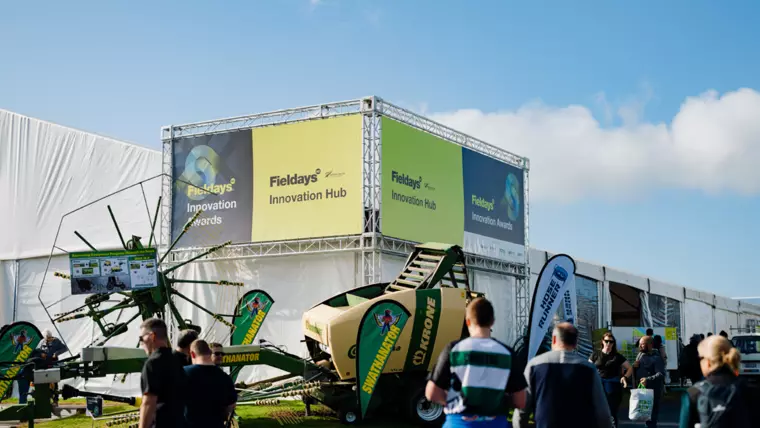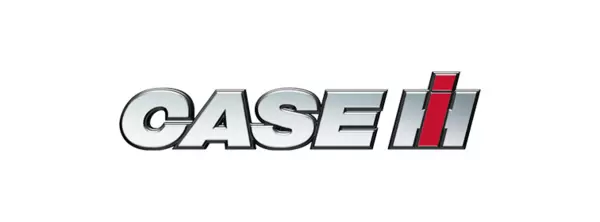Kiwi Ingenuity in action at Fieldays 2025
Article supplied by Fieldays Innovation Sponsor Blender.
Blender are a product design and development consultancy based in New Zealand.

26 June 2025
The original article can be found on blender.nz
Kiwi Ingenuity in action at Fieldays 2025
Each year, Fieldays proves why it’s the beating heart of agricultural innovation in New Zealand. For us at Blender, it’s more than a trade show, it’s a snapshot of what’s possible when innovation meets purpose, and ambition meets action.
This year’s theme, Your Place, really hit home. We see innovation not as something that happens in isolation, but through connection – between people, ideas, and industries. Fieldays reminded us that our place is right at the intersection of creativity and practicality, helping turn promising ideas into purposeful, market-ready products.
It’s not just about showcasing what’s new. It’s about building what’s next. Whether it’s tackling methane emissions or rethinking farm safety, we saw Kiwis solving meaningful problems—in the very environments they live and work in. That’s exactly the kind of thinking we’re proud to support.
In this post, we’re sharing a few of our standout moments from the 57th Fieldays: the technologies, teams, and ideas that sparked our interest and got us thinking about where design and engineering can make the biggest impact.
Applied technology – innovation that solves real problems
The Fieldays Innovation Hub is always a highlight for us, and this year, two standout innovations in applied technology really impressed.
Precision water testing without the lab
Awarded a Judge’s Special Mention in the Early Stage category, Bactosure is changing the way we think about water safety. Their game-changing solution brings microbiological lab accuracy to on-site water testing. The system is simple, fast, and affordable, with a user-friendly app and intuitive workflow. It’s a smart response to a critical global issue, and their progress toward ISO 17025 accreditation speaks volumes. With potential to safeguard water supplies around the world, Bactosure is a startup with serious global impact written all over it.
Smart monitoring for smarter horse health
Another standout was Elert EQ, a smart wearable for thoroughbred horses that allows owners and trainers to monitor core temperatures, GPS movement, and performance metrics – 24/7 from anywhere. Built with thoughtful design and clever engineering, this device delivers real-time alerts and data via a mobile app, with months-long battery life and safety-focused features like breakaway fittings. For a small team, their execution is seriously impressive, and we see huge potential for Elert EQ to set a new standard in equine health tech.
Waste to value: Circular thinking in action
We’re big believers in circular economies – designing out waste and finding smarter ways to turn byproducts into new value. Fieldays 2025 showcased some exciting examples of this thinking in action.
Tasty treats from dairy byproduct
Winner of both the Early-Stage and People’s Choice awards, Mīti made a strong impression at Fieldays, both with their pitch and their product. Their innovation? A shelf-stable, functional protein snack made from surplus bobby calves, a long-standing byproduct of the dairy industry. It’s a clever and compelling response to a complex challenge: reducing waste, improving animal value chains, and creating premium nutrition with a lower carbon footprint. The samples were a hit with visitors, and the buzz around their site reflected real commercial and consumer interest. It’s early days, but Mīti is already showing signs of being a high-impact, export-ready innovation grounded in purpose.
Turning sheepskin into premium collagen
Another compelling example of turning waste into a high value product was Tertiary Extracts Ōtautahi (TEO), a Christchurch-based team using science to rethink what’s possible with primary sector byproducts. Their innovation, Ovitage, is a bioactive collagen extracted from New Zealand sheepskins, material that would otherwise go to waste. It forms the foundation of their first product, Everee Women, a wellness-focused collagen supplement. With clean branding and a strong environmental story, TEO is proving that innovation and sustainability can go hand in hand.
Biotech: Science with regional impact
New Zealand is well-positioned to lead in the bioeconomy, creating new value chains, growing regional prosperity, and helping the world meet its climate goals. Fieldays 2025 showcased the real potential of biotech with two standout companies already showing what that future could look like.
The future of fermentation
Aotearoa’s food future is being reshaped by companies like Mara Bio, who are using proprietary fermentation technology to transform food industry by-products into highly functional, nutrient-rich ingredients. Their platform produces proteins, fibres, minerals, and probiotics from existing waste streams, reducing emissions while unlocking new revenue for food producers.
Tackling methane at the source
Winner of the Early Stage category, Ruminant Biotech is addressing one of agriculture’s biggest climate challenges – methane from livestock. Their innovation is a slow-release bolus that stays in the cow’s stomach for up to six months, reducing methane emissions by over 70 percent during that period. Backed by rigorous clinical research and aiming for commercial launch in 2025, their long-term goal is ambitious: 100 million cows treated, and 10 megatons of emissions avoided annually by 2035.
Grass roots invention: Kiwi ingenuity at its best
Among all the high-tech and high-budget innovations at Fieldays, it’s often the simple, practical ideas, born in sheds and paddocks, that remind us of the power of Kiwi problem solving. Here are a couple that caught our attention:
Doing the heavy lifting
Designed by a farmer, for farmers, the Ramrack is a multi-use lifting device that bolts onto the front of UTVs and side-by-sides. It’s built to reduce strain and injury during everyday lifting tasks around the farm, supporting both productivity and health and safety. The design is smart, functional, and ready for refinement. With the right go-to-market partner, Ramrack could easily become a go-to tool across New Zealand farms.
Smart thinking from the next generation
KiwiPrune is a purpose-built tool designed by four students from St Paul’s Collegiate School in Hamilton: Courtney Malloy, Casey Purves, Libby Meredith, and Madeleine Anderson. Their innovation tackles a very real challenge in horticulture – removing plastic clips from kiwifruit vines, a task that’s usually slow and labour-intensive. The tool streamlines the job, making it quicker and easier for workers in the field. It’s a clever solution to a common problem, and a well-deserved winner of the Young Innovators of the Year Award. We’re excited to see where this team goes next.
From small beginnings: Supporting the journey from idea to impact
Fieldays continues to prove its value as a launchpad for early-stage companies, while also highlighting those who are scaling up and gaining global traction. It’s encouraging to see New Zealand’s innovation ecosystem actively supporting that growth.
Machine learning meets milking sheds
Agri AI first appeared in the Fieldays Innovation Hub two years ago with a prototype of their machine-learning powered teat sprayer. Fast forward to today, and that product has been commercialised in partnership with GEA, looking sharp and ready for widespread on-farm use. It’s a great example of how good technology, combined with the right partners, can scale quickly to deliver real value to farmers.
Smarter mastitis detection at scale
Since first appearing at Fieldays, Bovonic has been on a steady growth path, quickly becoming a standout in New Zealand’s agritech scene. Their mastitis detection system is already making a measurable impact on dairy farms, offering a smarter, faster way to identify a costly and common issue. With international expansion now on the horizon, Bovonic is showing what it takes to move from local innovation to global success.

